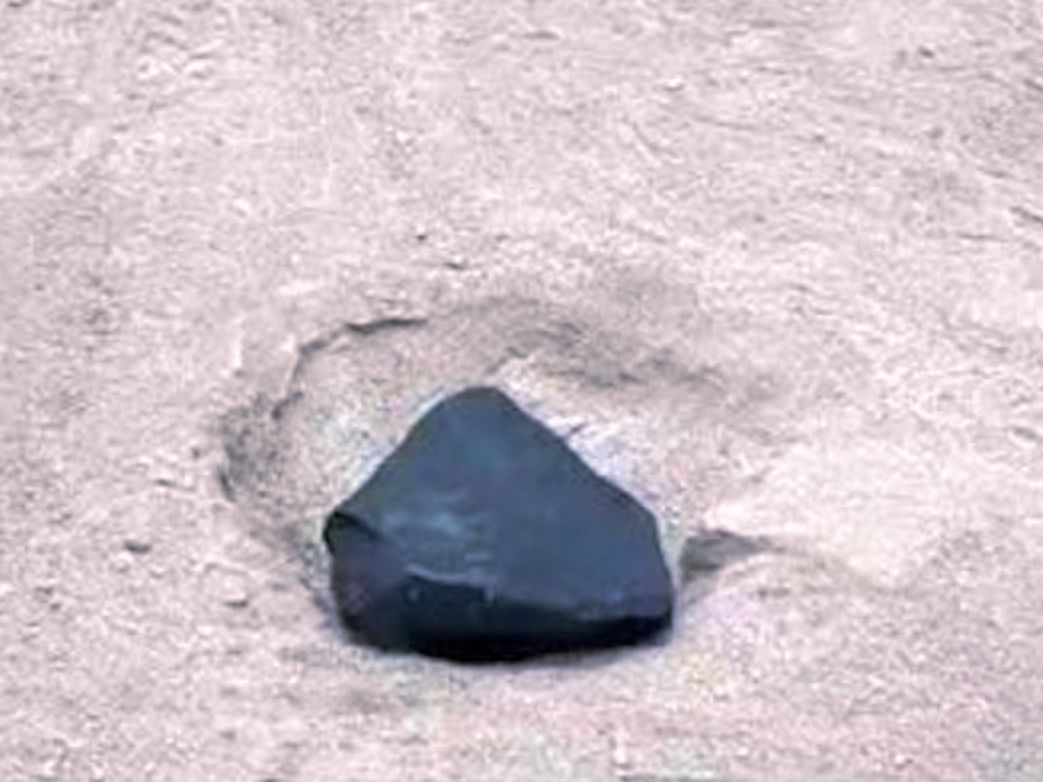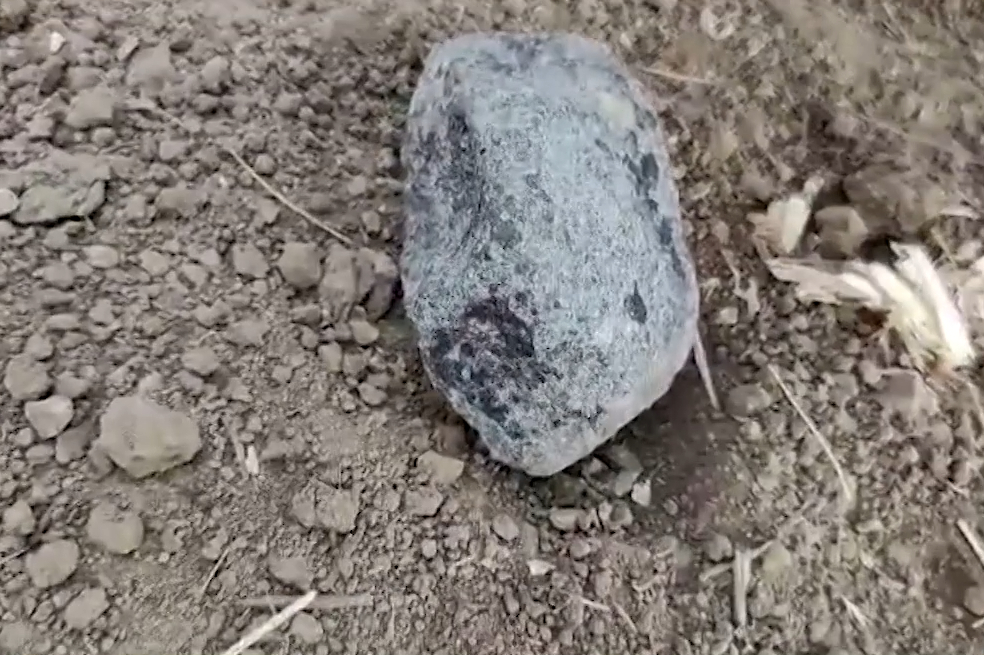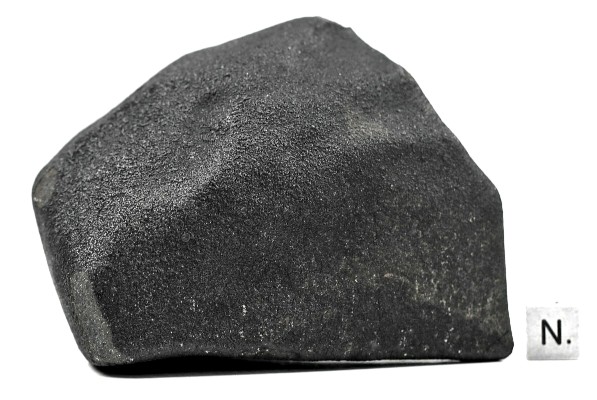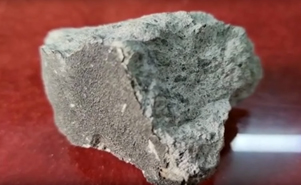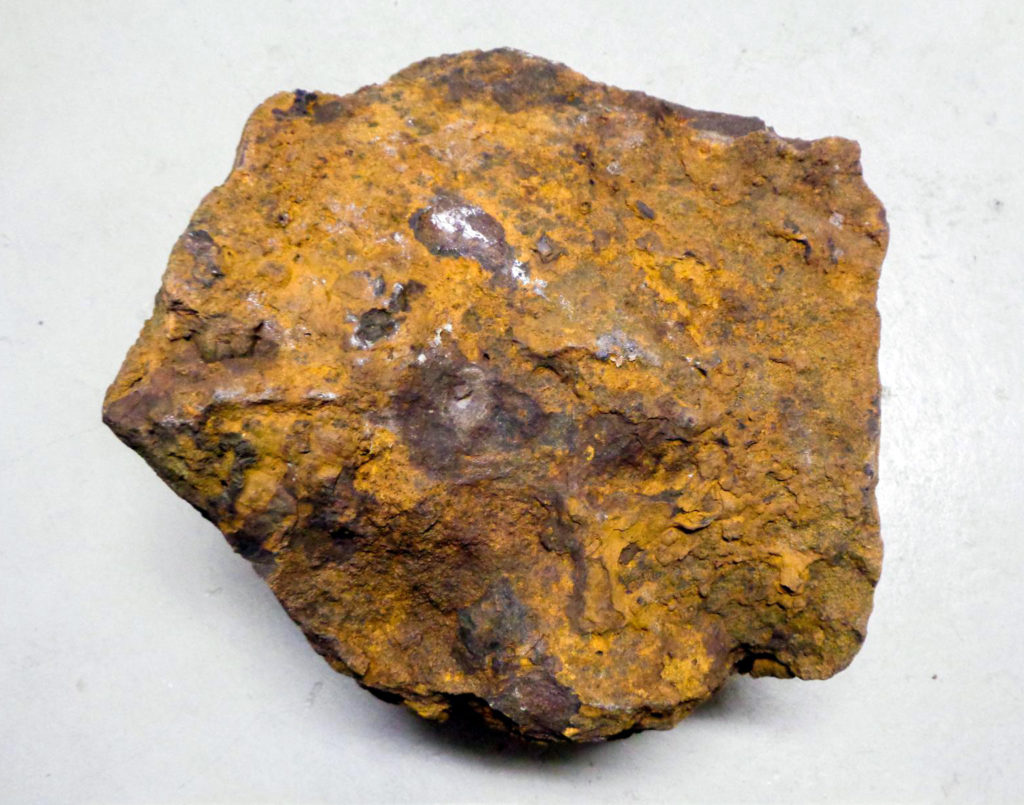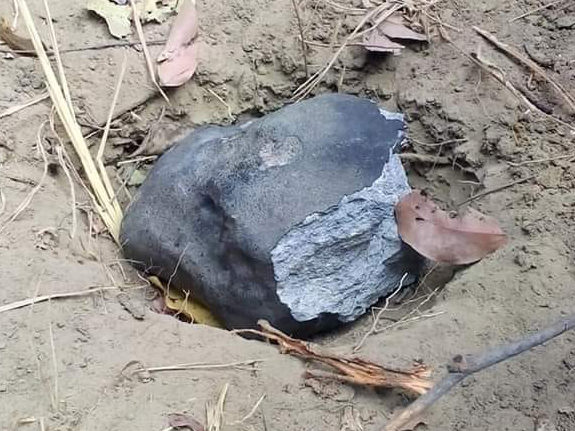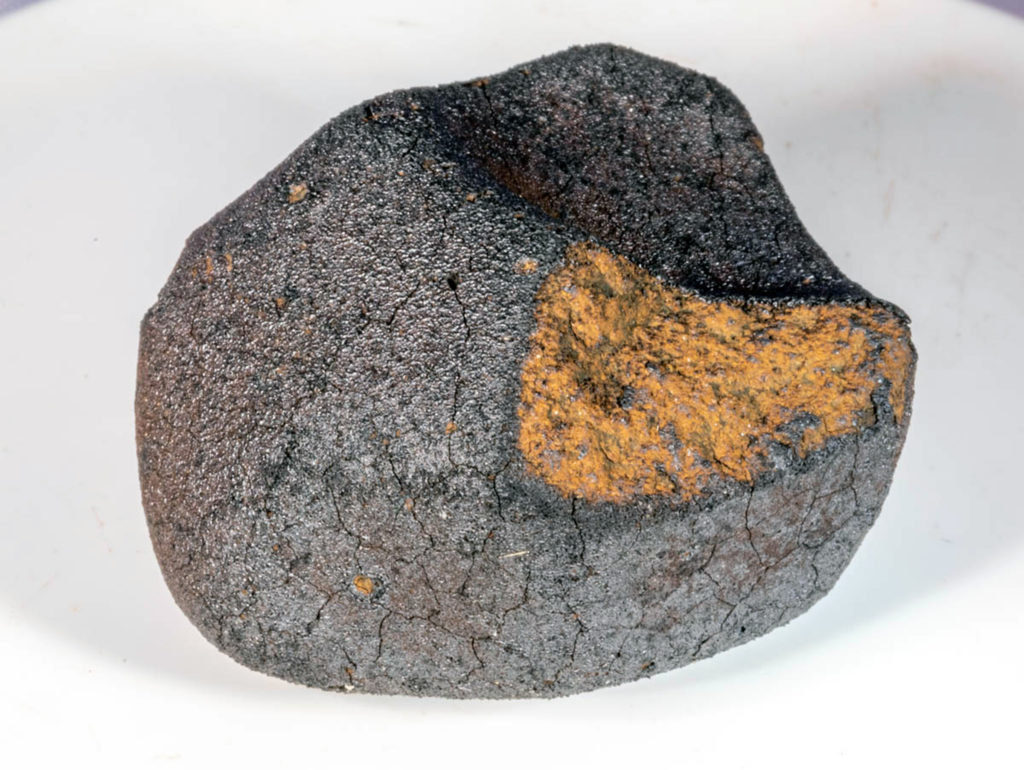Cosmic-ray bath in a past supernova gives birth to Earth-like planetsOPEN ACCESS
Ryo Sawada, Hiroyuki Kurokawa, Yudai Suwa, Tetsuo Taki, Shiu-Hang Lee, and Ataru Tanikawa Science Advances10 Dec 2025Vol 11, Issue 50 LINK (OPEN ACCESS)PDF (OPEN ACCESS) “A key question in astronomy is how ubiquitous Earth-like rocky…
Interstellar ices as carriers of supernova material to the early solar systemOPEN ACCESS
Martin Bizzarro, Martin Schiller, Jesper Holst, Laura Bouvier, Miroslav Groen, Frédéric Moynier, Elishevah M. M. E. van Kooten, Maria Schönbächler, Troels Haugbølle, Darach Watson, Anders Johansen, James N. Connelly & Emil Bizzarro Nature Communications, Volume…
Physicochemical Controls on the Compositions of the Earth and PlanetsOPEN ACCESS
Paolo A. Sossi, Remco C. Hin, Thorsten Kleine, Alessandro Morbidelli & Francis Nimmo Space Science Reviews, Volume 221, article number 118, Published: 25 November 2025 LINK (OPEN ACCESS)PDF (OPEN ACCESS) “Despite the fact that the…
Bennu and Ryugu constituents from samples IR analyses and potential source of terrestrial planets’ ingredientsOPEN ACCESS
C. Pilorget, T. Okada, J.-P. Bibring, D. Loizeau, K. Hatakeda, L. Nardelli, L. Riu, R. Sheppard, T. Jiang, M. Mahlke, R. Brunetto, D. Baklouti, R. Fukai, M. Abe, A. Aléon-Toppani, Y. Enokido, V. Hamm, S….
Dynamical origin of Theia, the last giant impactor on EarthOPEN ACCESS
Duarte Branco, Sean N. Raymond, Pedro Machado Preprint submitted to Elsevier, 2 July 2025 PDF (OPEN ACCESS) Update (11 July 2025): Icarus, available online 11 July 2025 LINK + PDF (OPEN ACCESS) “Cosmochemical studies have…
Size–Frequency Distribution of Terrestrial Leftover Planetesimals and S-complex Implanted AsteroidsOPEN ACCESS
Rogerio Deienno, André Izidoro, David Nesvorný, William F. Bottke, Fernando Roig, and Simone Marchi The Astrophysical Journal, Volume 986, Number 2, 12 June 2025 LINK (OPEN ACCESS)PDF (OPEN ACCESS) “The isotopic composition of meteorites linked…
Meteorite-common amino acid induces clay exfoliation and abiotic compartment formationOPEN ACCESS
Orr Rose Bezaly, Annemieke Petrignani & Helen E. King Communications Earth & Environment, Volume 6, Article number: 435 LINK (OPEN ACCESS)PDF (OPEN ACCESS) “Clay surfaces have been invoked as crucial components in the origin of…
The shaping of terrestrial planets by late accretions
Simone Marchi & Jun Korenaga NatureReview, Volume 641, pages 1111–1120, Published: 28 May 2025 LINK “Terrestrial planets—Mercury, Venus, Earth and Mars—formed by the accretion of smaller objects. The Earth was probably the latest terrestrial planet…
A chondritic Martian mantle revealed by the heavy noble gas composition of the chassignite NWA 8694
Sandrine Péron, Sujoy Mukhopadhyay Geochimica et Cosmochimica ActaIn Press, Journal Pre-proof, Available online 11 January 2025 LINK “Accretion of volatile elements is a critical step to make a planet habitable. It is often assumed that…
Early Solar System Turbulence Constrained by High Oxidation States in the Oldest Noncarbonaceous PlanetesimalsOPEN ACCESS
Teng Ee Yap, Konstantin Batygin and François L. H. Tissot The Planetary Science Journal, Volume 6, Number 1 LINK (OPEN ACCESS)PDF (OPEN ACCESS) “Early solar system (SS) planetesimals constitute the parent bodies of most meteorites…
Comment on “Did the terrestrial planets of the Solar System form by pebble accretion?”OPEN ACCESS
PDF (OPEN ACCESS) Anders Johansen, Peter Olson, Zachary Sharp “Morbidelli, Kleine & Nimmo (2024) (MKN) recently published a critical analysis on whether the terrestrial planets in the Solar System formed by rapid pebble accretion or…
Did the terrestrial planets of the Solar System form by pebble accretion?OPEN ACCESS
Alessandro Morbidelli, Thorsten Kleine, Francis Nimmo In press as a Frontier paper in Earth and Planetary Science Letters PDF (OPEN ACCESS) “The dominant accretion process leading to the formation of the terrestrial planets of the…
Implantation of asteroids from the terrestrial planet region: The effect of the timing of the giant planet instabilityOPEN ACCESS
Andre Izidoro, Rogerio Deienno, Sean N. Raymond, Matthew S. Clement Under review in Icarus PDF (OPEN ACCESS) “The dynamical architecture and compositional diversity of the asteroid belt strongly constrain planet formation models. Recent Solar System…
A New Database of Giant Impacts over a Wide Range of Masses and with Material Strength: A First Analysis of OutcomesOPEN ACCESS
Alexandre Emsenhuber, Erik Asphaug, Saverio Cambioni, Travis S. J. Gabriel, Stephen R. Schwartz, Robert E. Melikyan and C. Adeene Denton The Planetary Science Journal, Volume 5, Number 3 LINK (OPEN ACCESS)PDF (OPEN ACCESS) “In the…
Outgassing Composition of the Murchison Meteorite: Implications for Volatile Depletion of Planetesimals and Interior-atmosphere Connections for Terrestrial ExoplanetsOPEN ACCESS
Maggie A. Thompson, Myriam Telus, Graham Harper Edwards, Laura Schaefer, Jasmeet Dhaliwal, Brian Dreyer, Jonathan J. Fortney and Kyle Kim The Planetary Science Journal, Volume 4, Number 10 LINK (OPEN ACCESS)PDF (OPEN ACCESS) “Outgassing is…
Silicon isotope constraints on terrestrial planet accretionOPEN ACCESS
Isaac J. Onyett, Martin Schiller, Georgy V. Makhatadze, Zhengbin Deng, Anders Johansen & Martin Bizzarro NaturePublished: 14 June 2023 LINK (OPEN ACCESS)PDF (OPEN ACCESS) “Understanding the nature and origin of the precursor material to terrestrial…
Early bombardment of the moon: Connecting the lunar crater record to the terrestrial planet formation
David Nesvorný, Fernando V. Roig, David Vokrouhlický, William F. Bottke, Simone Marchi, Alessandro Morbidelli, Rogerio Deienno Icarus, Available online 29 March 2023, 115545 LINK „The lunar crater record features ∼50 basins. The radiometric dating of…
Terrestrial planet and asteroid belt formation by Jupiter–Saturn chaotic excitationOPEN ACCESS
Patryk Sofia Lykawka & Takashi Ito Scientific Reports, Volume 13, Article number: 4708 LINK (OPEN ACCESS)PDF (OPEN ACCESS) “The terrestrial planets formed by accretion of asteroid-like objects within the inner solar system’s protoplanetary disk. Previous…
Degassing of early-formed planetesimals restricted water delivery to Earth
M. E. Newcombe, S. G. Nielsen, L. D. Peterson, J. Wang, C. M. O’D. Alexander, A. R. Sarafian, K. Shimizu, L. R. Nittler & A. J. Irving NaturePublished: 15 March 2023 LINK “The timing of…
Early water delivery to terrestrial planet regions during the stages of Jupiter’s formation and migration in the Grand Tack modelOPEN ACCESS
Masahiro Ogihara, Hidenori Genda, Yasuhito Sekine accepted for publication in PSJ PDF (OPEN ACCESS)6-minute video summary Update (13 February 2023): The Planetary Science Journal, Volume 4, Number 2LINK (OPEN ACCESS)PDF (OPEN ACCESS) “The formation and…
Origin of life-forming volatile elements in the inner Solar System
Michael W. Broadley, David V. Bekaert, Laurette Piani, Evelyn Füri & Bernard Marty NatureReview, Published: 09 November 2022 LINK “Volatile elements such as hydrogen, carbon, nitrogen and oxygen are essential ingredients to build habitable worlds…
Origin of moderately volatile element depletion on differentiated bodies: insights from the evaporation of indium from silicate melts
Deze Liu, Frédéric Moynier, Julien Siebert, Paolo A. Sossi, Yan Hu, Edith Kubik Geochimica et Cosmochimica ActaAvailable online 13 October 2022 LINK “In comparison with the Sun and CI chondrites, moderately volatile elements (MVEs) are…
Anatomy of rocky planets formed by rapid pebble accretion III. Partitioning of volatiles between planetary core, mantle, and atmosphereOPEN ACCESS
Anders Johansen, Thomas Ronnet, Martin Schiller, Zhengbin Deng, Martin Bizzarro Version accepted for Astronomy & Astrophysics PDF (OPEN ACCESS) “Volatile molecules containing hydrogen, carbon, and nitrogen are key components of planetary atmospheres. In the pebble…
Core segregation during pebble accretion
Peter Olson, Zachary Sharp, Susmita Garai Earth and Planetary Science LettersVolume 587, 1 June 2022, 117537 LINK “Highlights • Pebble accretion builds terrestrial protoplanets in a few million years.• Core segregation is synchronized to the…
Evidence for a primordial isotopic gradient in the inner region of the solar protoplanetary discOPEN ACCESS
J. Mah, R. Brasser, J. M. Y. Woo, A. Bouvier, S. J. Mojzsis manuscript, accepted for publication in Astronomy & Astrophysics PDF (OPEN ACCESS) and PDF (OPEN ACCESS) “Not only do the sampled terrestrial worlds…
Effects of pebble accretion on the growth and composition of planetesimals in the inner Solar SystemOPEN ACCESS
J. Mah, R. Brasser, A. Bouvier, S. J. Mojzsis accepted for publication in MNRAS PDF (OPEN ACCESS) “Recent work has shown that aside from the classical view of collisions by increasingly massive planetesimals, the accretion…
Terrestrial planet formation from lost inner solar system materialOPEN ACCESS
Christoph Burkhardt, Fridolin Spitzer, Alessandro Morbidelli, Gerrit Budde, Jan H. Render, Thomas S. Kruijer and Thorsten Kleine Science Advances, 22 Dec 2021, Vol 7, Issue 52 LINK (OPEN ACCESS)PDF (OPEN ACCESS) “Two fundamentally different processes…
Common feedstocks of late accretion for the terrestrial planets
M.-H. Zhu, A. Morbidelli, W. Neumann, Q.-Z. Yin, J.M.D. Day, D.C. Rubie, G.J. Archer, N. Artemieva, H. Becker, K. Wünnemann Nature Astronomy (30 September 2021) LINK “Abundances of the highly siderophile elements (HSEs) in silicate…
The Effect of a Strong Pressure Bump in the Sun’s Natal Disk: Terrestrial Planet Formation via Planetesimal Accretion Rather than Pebble Accretion
André Izidoro, Bertram Bitsch, and Rajdeep Dasgupta The Astrophysical Journal, Volume 915, Number 1 LINK “Mass-independent isotopic anomalies of carbonaceous and noncarbonaceous meteorites show a clear dichotomy suggesting an efficient separation of the inner and…
Terrestrial planet compositions controlled by accretion disk magnetic fieldOPEN ACCESS
William F. McDonough & Takashi Yoshizaki Progress in Earth and Planetary Science, Volume 8, Article number: 39 (2021)Review LINK (OPEN ACCESS)PDF (OPEN ACCESS) “Terrestrial planets (Mercury, Venus, Earth, and Mars) are differentiated into three layers:…
The early instability scenario: Mars’ mass explained by Jupiter’s orbitOPEN ACCESS
Matthew S. Clement, Nathan A. Kaib, Sean N. Raymond, John E. Chambers PDF (OPEN ACCESS) IcarusIn Press, Journal Pre-proof, Available online 13 June 2021 LINK “Highlights • Present a large suite of controlled early instability…
Evidence from achondrites for a temporal change in Nd nucleosynthetic anomalies within the first 1.5 million years of the inner solar system formation
Paul Frossard, Zhiguo Guo, Mary Spencer, Maud Boyet, Audrey Bouvier Earth and Planetary Science LettersVolume 566, 15 July 2021 LINK “Highlights • Nd isotope composition of planetesimals-derived achondrites is different than planetary bodies (Earth, Mars…
A pebble accretion model for the formation of the terrestrial planets in the Solar SystemOPEN ACCESS
Anders Johansen, Thomas Ronnet, Martin Bizzarro, Martin Schiller, Michiel Lambrechts, Åke Nordlund, Helmut Lammer Science Advances, 17 Feb 2021:Vol. 7, no. 8, eabc0444DOI: 10.1126/sciadv.abc0444 LINK (OPEN ACCESS)PDF (OPEN ACCESS) “Pebbles of millimeter sizes are abundant…
Formation of Venus, Earth and Mars: Constrained by Isotopes
Helmut Lammer, Ramon Brasser, Anders Johansen, Manuel Scherf & Martin Leitzinger Space Science ReviewsPublished: 22 December 2020 LINKUpdate (12 February 2021); PDF (OPEN ACCESS) “Here we discuss the current state of knowledge of terrestrial planet…
Observational constraints on the likelihood of 26Al in planet-forming environmentsOPEN ACCESS
Megan Reiter accepted to A&A Letters PDF (OPEN ACCESS) “Recent work suggests that 26Al may determine the water budget in terrestrial exoplanets as its radioactive decay dehydrates planetesimals leading to rockier compositions. Here I consider…
Accretion disk’s magnetic field controlled the composition of the terrestrial planetsOPEN ACCESS
William F McDonough, Takashi Yoshizaki LINK (OPEN ACCESS)PDF (DOWNLOAD) “Chondrites, the building blocks of the terrestrial planets, have mass and atomic proportions of oxygen, iron, magnesium, and silicon totaling ≥90% and variable Mg/Si (∼25%), Fe/Si…
Isotopically distinct terrestrial planets via local accretion
Jingyi Mah, Ramon Brasser IcarusAvailable online 21 August 2020, 114052 LINK “Highlights • We find out what the depleted disc model predicts for the terrestrial planets’ isotopic compositions.• The terrestrial planets accrete most of their…
A reassessment of the iron isotope composition of the Moon and its implications for accretion and differentiation of terrestrial planets
Franck Poitrasson, Thomas Zambardi, Tomas Magna, Clive R. Neal Geochimica et Cosmochimica Acta Available online 30 September 2019 LINK “The Fe isotope composition of planetary bodies may provide constraints on their accretion modes and/or differentiation…
On the principle building blocks of Mars and Earth
Christian Liebske, Amir Khan IcarusAvailable online 20 January 2019 LINK “Highlights • Stochastic mixing of chondrites and achondrites to reconcile isotopic signatures for Mars and Earth indicate highly non-unique solution spaces • Complementary geophysical and…
The spatial distribution of carbon dust in the early solar nebula and the carbon content of planetesimalsOPEN ACCESS
Hans-Peter Gail, Mario Trieloff accepted by Astronomy & Astrophysics PDF (OPEN ACCESS) “A high fraction of carbon bound in solid carbonaceous material is observed to exist in bodies formed in the cold outskirts of the…
Terrestrial Planet Formation Constrained by Mars and the Structure of the Asteroid Belt
André Izidoro, Sean N. Raymond, Alessandro Morbidelli, Othon C. Winter Accepted for publication in MNRAS update (Sept 9): MNRAS (November 11, 2015) 453 (4): 3619-3634. doi: 10.1093/mnras/stv1835 First published online September 9, 2015 PDF (full…
The Feeding Zones of Terrestrial Planets and Insights into Moon Formation
Nathan A. Kaib, Nicolas B. Cowan Icarus, available online 29 January 2015 doi:10.1016/j.icarus.2015.01.013 PDF LINK (full text) LINK

